Previous Article
Next Article
- AM WORLD
- 100 YEARS OF ASTON MARTIN
WORKS
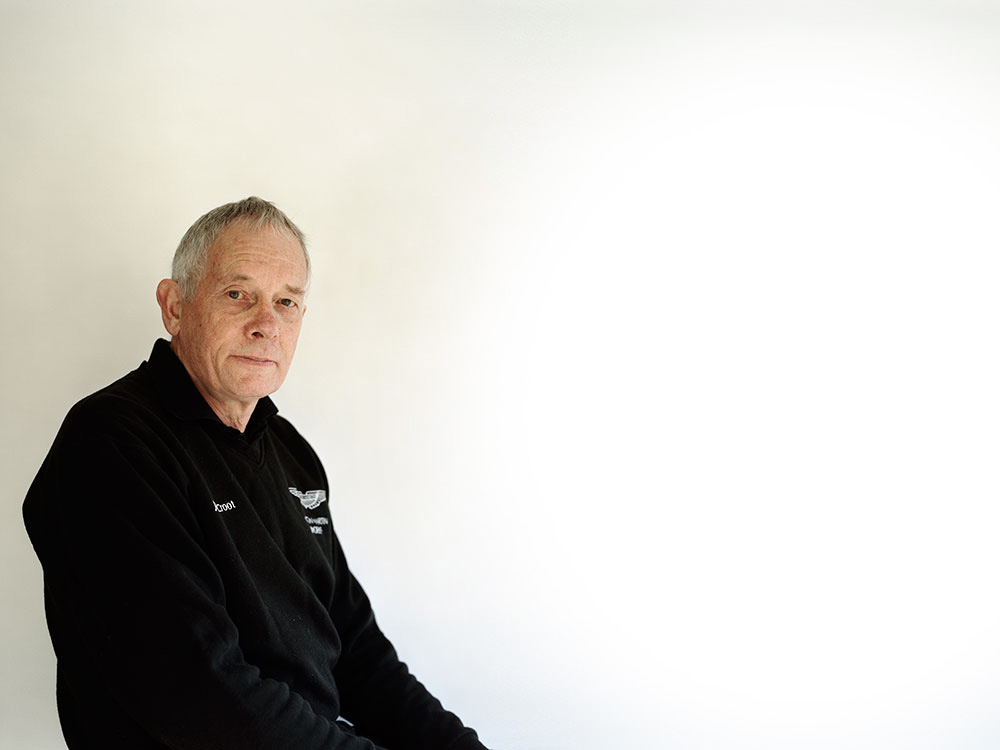
THE WORKS TEAM
Meet some of the staff at Aston Martin works whose skilled craftsmanship and knowledge of the marque make them unrivalled in restoring classic cars and servicing newer models
Photographs: John Spinks Interviews: Andy Tongue
John Croot
Trimmer
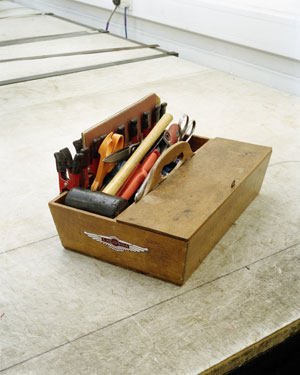
John Croot’s classic wooden tool box, a gift from his father, who also worked at Aston Martin
Working at Aston Martin is a family affair for trimmer John Croot, whose father joined in 1936 as an apprentice in the bodybuilding section. On his retirement just under 30 years ago, Croot senior gave John, who started work the day after his 15th birthday, his classic wooden tool box as a gift, beautifully emblazoned with the old Lagonda motif.
As a trimmer, John is responsible for everything found in the car’s interior on both restorations and bespoke models under the Q customisation programme. “We start off with a raw hide and cut the patterns out to shape or make patterns if it’s a new project,” he explains. “Once we have cut them up, they are sewn, then they come back to us to be put on the seat or other part of the car. I’ve probably cut more leather for Aston Martin interiors than anybody else over the years.”
John is diplomatic when asked whether he prefers working on heritage or contemporary models: “In the older cars, simplicity was the key. Now you have seats with eight-way movements, air blowing through them and leather perforations so we are using far more complex materials.
“Seeing a classic model finished immaculately gives you a great sense of job satisfaction. One came in recently riddled with woodworm, which had bored holes through the leather. When we went to trim it, we took off the leather and the wood had just powdered away so we almost had to start from scratch.”
The trim shop also reproduces artwork on the seats, using a new bespoke embroidery facility: “They are mainly people’s names or crests, but we have done plenty of royal coats of arms over the years.”
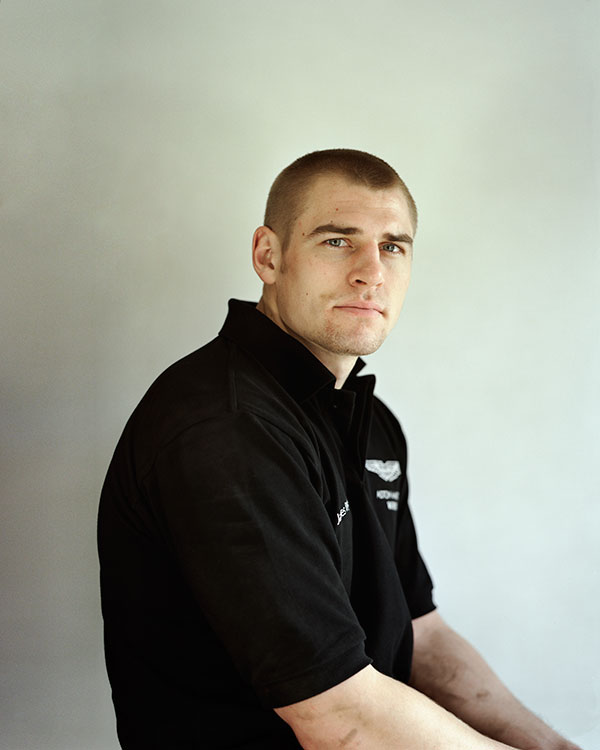
James Dyer is one of the flag-bearers for the next generation of engineers and craftspeople coming through the system at Aston Martin Works. A third-year apprentice mechanic, he has patiently learned his trade in the heritage department, under the careful guidance of experienced senior colleagues.
“I’ve always been a huge car fan and with its history Aston Martin was where I wanted to work,” he says. Like many, it is the chance to restore classic models to their prime, which appeals to him. “If a barn-find comes in, it’s completely stripped down and the team works out what we can salvage and repair and what needs to be replaced. Once the body has been to the panel shop, it comes back and the mechanic will assemble the engine, which is normally a mixture of original and new parts.
James finds that each Aston Martin has its own quirks. “It has been a great learning curve— you come across something new every day,” he says. “Some of the cars will be with us for two or three weeks, depending on how much work is needed on them, but a full restoration job will take much longer.”
The first car he stripped down was a V8: “It’s still in the workshop and nearing completion. It needed a lot of work on the body and the panels but it won’t be too long until it’s finished now. In some ways it will be sad to see it go, but it will be some sight when it’s completed.”
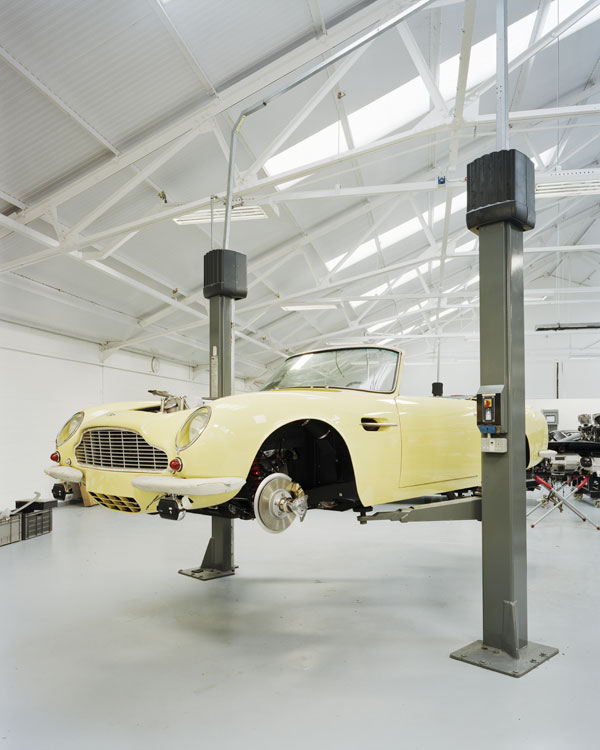
A 1970 DB6 MkII Volante undergoing restoration in the workshop
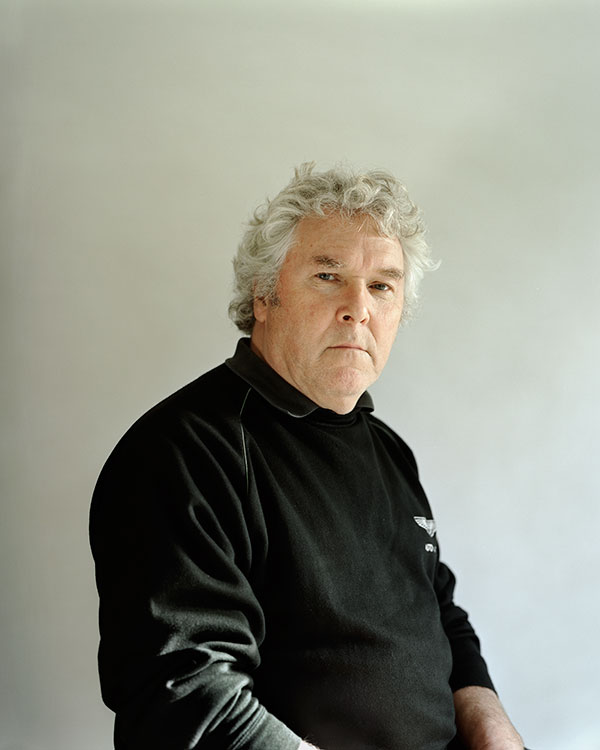
Michael Peach smiles broadly when asked how many Aston Martin engines he built during his many years working in the factory just across Tickford Street, in Newport Pagnell, from where we are standing in the Works. “Just under 400,” he says proudly. “I’ve still got my logbooks, which list every one of them.”
Michael now oversees all servicing and road testing, but he joined Aston Martin as a sub-assembler on the production line in 1971. He received the coveted nameplate as an engine builder in 1981, which means his name was inscribed on the engine of each of the cars he helped produce before moving across from the factory to Works.
“It was the chance to strip down engines and build them again but bigger and even better, which attracted me,” he says. “I just love building engines — it’s my passion. The supercharged Vantage was coming to the end of its lifespan on the production line so the time was right for me to come over here and take the opportunity to rebuild the engines on some older models.”
On numerous occasions over the past few years, a customer bringing their Aston Martin in to be serviced or restored has sought out Michael on the floor of Works and asked to shake his hand or have a picture taken with the man whose name can be found under their bonnet. “It’s a nice feeling when that happens. Aston Martin as a company is like a family and it’s great to be able to do things like that with the personal touch.”
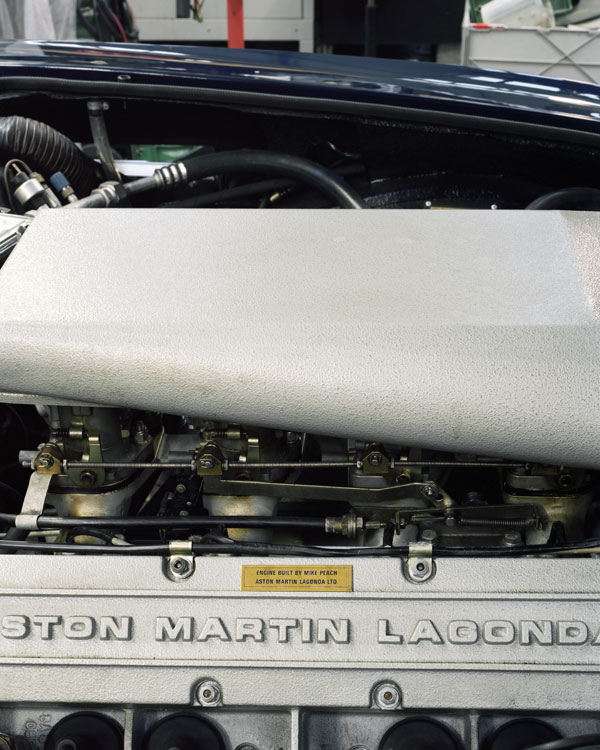
Michael Peach’s nameplate on the engine of a V8—one of nearly 400 he built during his time on the production line

Vinnie Ryan, known on internet forums as “Vanquish Vinnie”, is regarded as the world’s foremost expert on the original Aston Martin model. He is also responsible for the One-77 at Works and heads up the diagnostics team for the two models, which identifies and repairs any faults on cars brought in for service.
“A guy came in from Australia last year to have his picture taken with me because he’d read about me on the internet. Having started in a backstreet garage on Merseyside, it’s great to be recognised in this way. “It’s every boy’s dream to drive an Aston Martin and I get to drive one every day,” he enthuses, eyes gleaming. “There are just two of us here who are permitted to drive the One-77 as you need a special licence.”
Vinnie has a service manual for the Vanquish, which he’s had for a decade, but has added to it with notes and scribbles each time he has worked on one of the cars. “I think we need to produce an updated version with everything I’ve discovered about the car over the years,” he laughs.
He is often requested by customers to work on their cars so that the service record shows he has cared for it. He also judges at Aston Martin Owners Club (AMOC) concours.
What is the most memorable car he has repaired over the years? “The very first Vanquish, chassis No.1 ,” he says. “A customer brought that in a couple of years ago and I restored it to its original state. Actually, an even better state than when it left the factory, I’d say!”
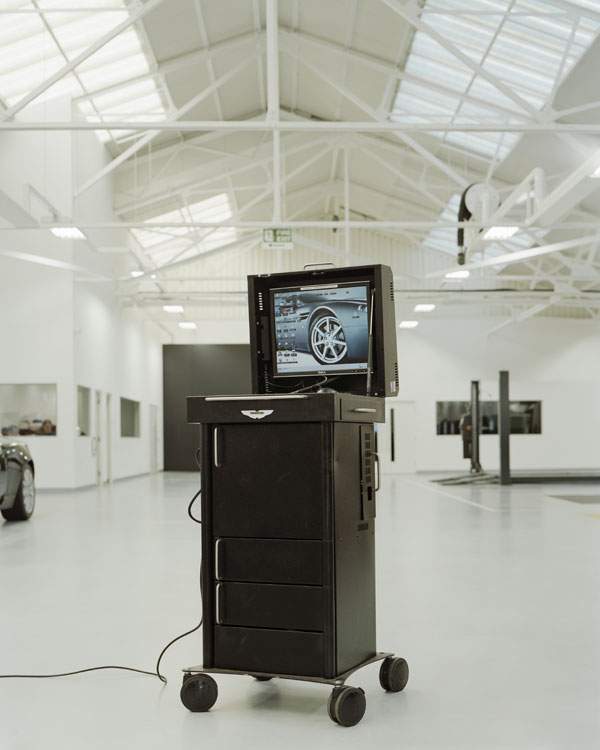
The high-tech diagnostics unit, which Vinnie Ryan uses to test Vanquishes and One-77s
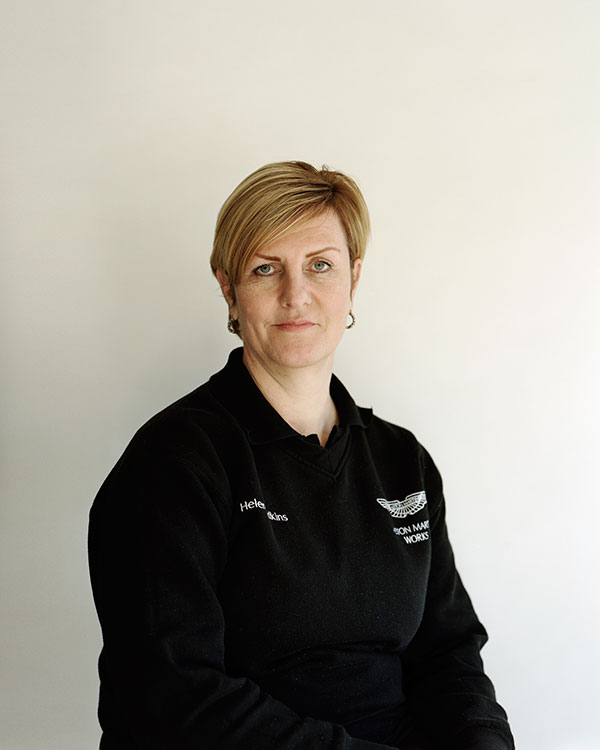
As she carefully begins to sew what will become a seat, Helen Judkins cheerfully explains why she loves her work in the trim shop. “The variety is what makes it so interesting,” she says. “We work on anything from bespoke models to restorations. Today, I’m sewing a hood for a DB7 and covers for a DB9 and a DBS.”
Like many of her colleagues, her favourite part is helping to restore a classic Aston Martin to prime condition. “Nothing beats seeing them when they come in and then again when they are completed. I have worked on quite a few DB5s and they would have to be my favourite model.”
Helen sits surrounded by a plethora of sewing machines. “I have different ones for different jobs,” she explains. “The main flatbed machine is for most of my sewing but I have a twin-needle for double-stitch and another for the really thick threads, almost rope-like, which some customers prefer. Another machine is set up for headlining and one for the cover, which goes over the hood when it is folded back.”
What makes the job such a skill? “The seats are so intricate. Once the needle goes into the leather, there’s no room for error.” As somebody who gets as close to the colour schemes as anyone, which does she like best? “We do a lot of blacks and reds but we recently did a DB5 in plain ivory and it looked gorgeous. I prefer one colour with all the fluting in the older cars.”

Helen gets to work on another seat cover on one of her trusty sewing machines
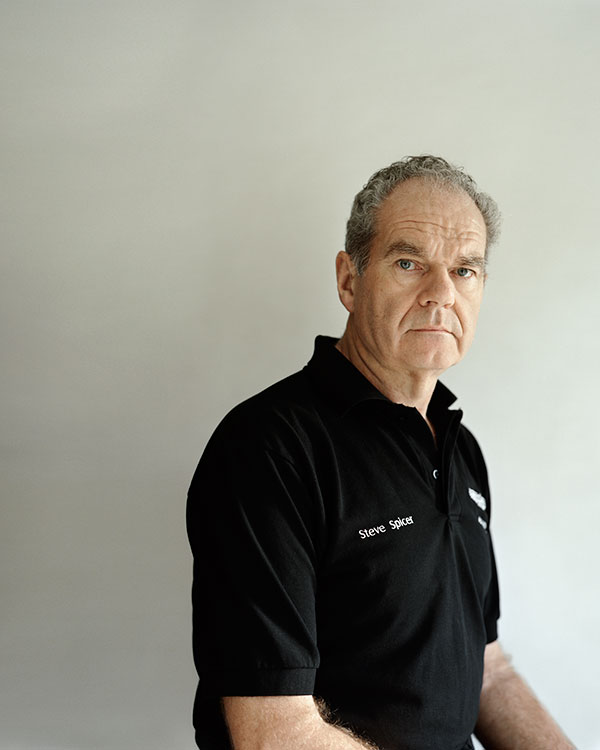
An eye for perfection and painstaking attention to detail are the main attributes required to work with Steve Spicer, lead technician in the paint department, and his team. Standing in one of the gleaming modern white spray bays, which contrast dramatically with the more traditional backdrop of the heritage workshop, he reflects on what the job entails.
“The process is involved and time-consuming. You need to have a good eye for the colour match of the finish,” he says. “If we are repainting from bare metal on a total restoration job, then the car comes to us once the panel team has finished with it. First, it is prepped and cleaned, next we put on the first layer of paint, which is then blocked down and checked for shape. If anything isn’t absolutely perfect, we would do it again.
“The car is then refitted with all the panels and the bumper and checked for shape again in case there are any gaps. We then remove all the panels, rub it down again and then colour it, which is the final layer of paint. We then flatten and polish all the panels. If it is a full restoration, we have to ‘black’ the chassis and the engine bay.”
If that sounds like an awful lot of work and dedication to detail, that’s because it is. “For a job like that, you are looking at 300 to 400 hours’ work from our department,” says Steve. Once he has given the car one final inspection under his bright lights and is happy that the finish is perfect, the car is passed onto the heritage section for the engine to be fitted.
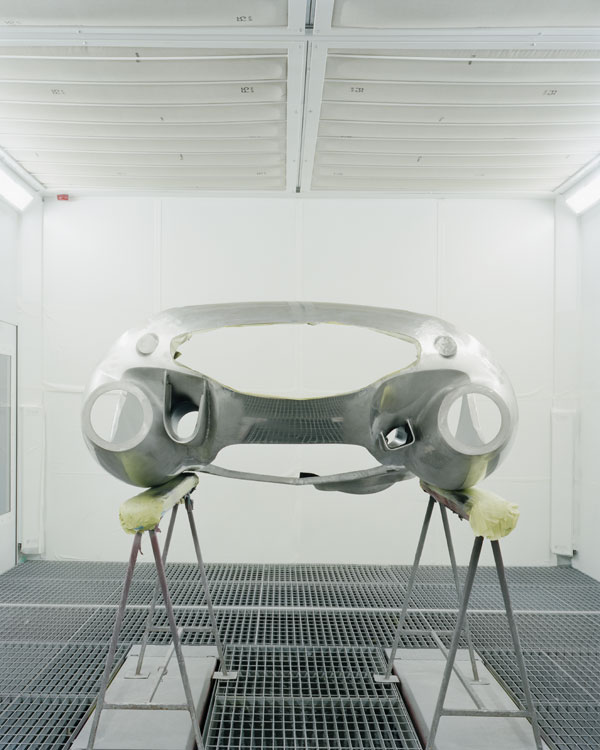
The body of a classic DB3S sits in the spotless spray bay, awaiting its first layer of paint from Steve Spicer and his team
Previous Article
Next Article
- AM WORLD
- 100 YEARS OF ASTON MARTIN
